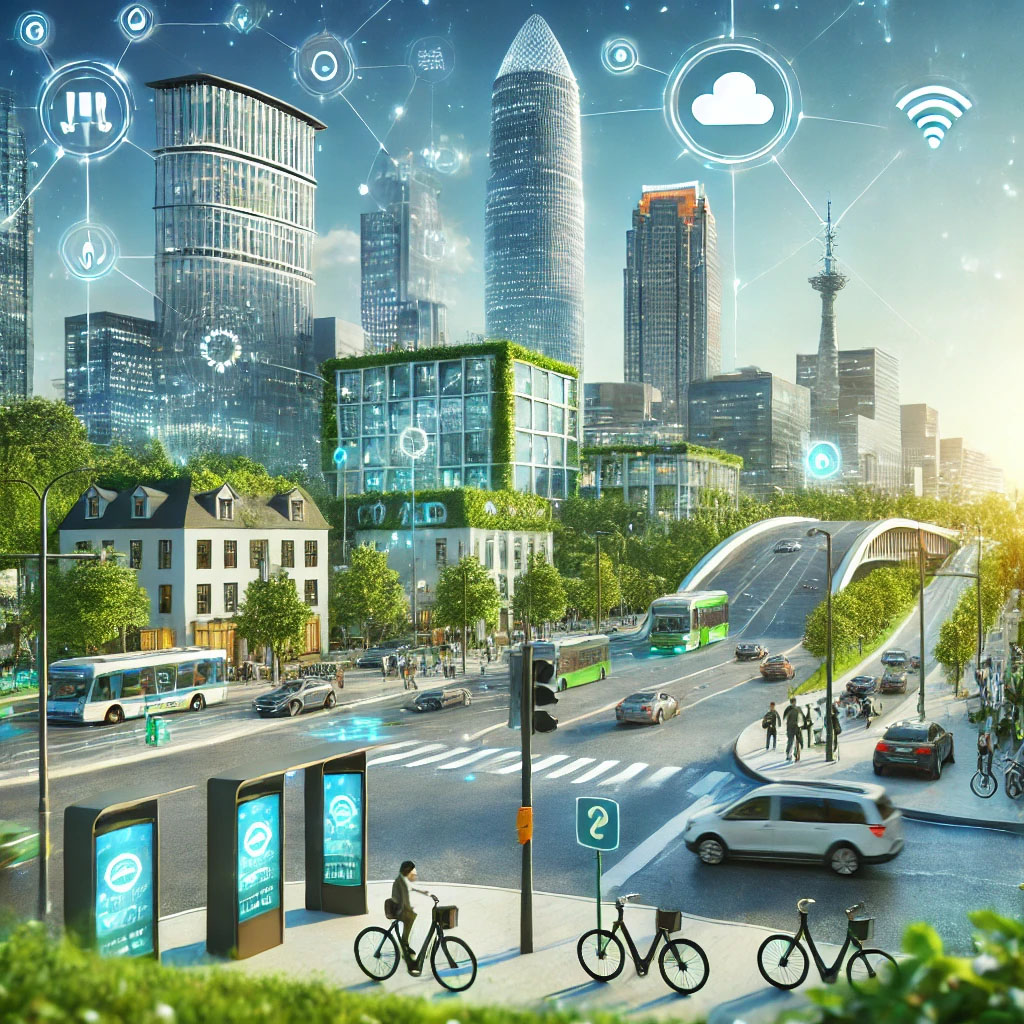The Midwest is an underrated epicenter for modern living, futuristic advancements, and tech achievements. Cities like Chicago and Milwaukee are paving the way for “smart” automated cities everywhere and ushering in a better, sustainable livelihood for their residents. Maybe unexpectedly, Cleveland is similarly standing out to its midwestern counterparts for impressive, eco-friendly initiatives.
Cleveland is rapidly transforming into a beacon of sustainability, fueled by an unlikely ally: high-speed internet. As the city embraces green initiatives and environmental responsibility, high-speed connectivity is proving to be a crucial tool in driving these efforts forward. Let’s explore how this dynamic duo is setting Cleveland on a path toward a greener future.
Cleveland’s Green Ambitions
Cleveland has long been known for its rich industrial history, but in recent years, the city has been pivoting toward a greener, more sustainable future. From ambitious renewable energy projects to innovative waste management solutions, the city’s commitment to environmental stewardship is palpable.
Cleveland has set clear goals, including reducing greenhouse gas emissions, increasing energy efficiency, and enhancing green spaces. But how does high-speed internet play into this green transformation?
High-Speed Internet & Sustainability
High-speed internet might seem obscure for sustainability practices, but its impact is immensely profound. With better connectivity, Cleveland can use technology in ways that were previously unimaginable.
Nowadays, fast internet is the best tool for launching citywide or nationwide initiatives to combat air pollution, unnecessary energy usage, traffic congestion, and general waste. Here’s how high-speed internet supports the city’s green goals:
Smart Infrastructure
One of the most exciting developments in sustainable urban planning is the rise of smart infrastructure. High-speed internet enables Cleveland to implement smart grids, which improve energy efficiency by monitoring and managing electricity usage in real-time. For example, smart meters provide energy consumption data, helping consumers and utilities make informed decisions. This technology minimizes energy waste and supports the integration of renewable energy sources, such as solar and wind power.
Additionally, smart traffic management systems, supported by high-speed internet, help reduce emissions by optimizing traffic flow. Sensors and cameras gather data to adjust traffic signals, decreasing congestion and idling time.
Cleveland has already installed smart streetlights in specific neighborhoods to help preserve energy. These LED lights are projected to cut electricity consumption by 40%, drastically reducing the city’s carbon emissions. Smart streetlights also have sensors for a light outage, sending signals for workers to repair them instantaneously.
Enhanced Environmental Monitoring
High-speed internet facilitates the deployment of advanced environmental monitoring systems. Cleveland can use connected sensors to track air and water quality, providing real-time data on pollution levels. This information is crucial for identifying pollution sources and implementing targeted measures to address them.
For example, the city has deployed sensors to monitor the Cuyahoga River’s water quality. This data helps manage the river’s health and ensure safe recreational use. Air quality sensors distributed across the city also allow Clevelanders to stay informed about pollution levels and take precautions when necessary.
Sustainable Transportation Solutions
Transportation is a significant contributor to urban carbon footprints, but Cleveland is making strides with smart transportation solutions. High-speed internet supports the development of electric vehicle (EV) infrastructure, including charging stations and vehicle-to-grid (V2G) technology. V2G allows EVs to return energy to the grid, supporting overall energy balance and enhancing grid stability.
The internet enables the implementation of bike-sharing programs and carpooling apps to help mitigate pollution. These platforms promote sustainable transportation options by making it easier for residents to choose eco-friendly travel alternatives. Fewer cars on the road means less emissions and less need for fossil fuel, which is a critical factor in reversing climate change.
Green Building Innovations
High-speed internet is also instrumental in advancing green building technologies. Smart building systems, which control lighting, heating, and cooling based on real-time data, rely on robust internet connectivity. These systems optimize energy usage, reduce waste, and improve occupant comfort.
Cleveland’s new developments and retrofitted buildings are increasingly incorporating these technologies. For instance, the Cleveland Clinic’s new facilities are equipped with state-of-the-art systems, contributing to its goal of achieving LEED (Leadership in Energy and Environmental Design) certification. This certification is a respected stamp on new green buildings, ensuring that construction complies with environmental laws.
Community Engagement and Education
A green future isn’t just about technology; it’s also about people. High-speed internet helps Clevelanders engage with and support sustainability efforts through online platforms. Social media, websites, and apps provide valuable information about local green initiatives, events, and volunteer opportunities.
Educational resources are also more accessible. Schools and community organizations can use the internet to promote environmental education, helping residents of all ages understand the importance of sustainability and how they can contribute. For cities that have populations with wealth discrepancies, high-speed internet effortlessly bridges resource divides and provides everyone with equal educational opportunities.
Looking Ahead
The future of Cleveland is bright, and high-speed internet is a vital part of this transformation. As the city continues to invest in green technologies and sustainable practices, connectivity will play an increasingly important role in driving progress.
From smart infrastructure and environmental monitoring to sustainable transportation and green buildings, the intersection of high-speed internet and sustainability is creating a more resilient and eco-friendly Cleveland. By harnessing the power of connectivity, Cleveland is not just envisioning a greener future but actively building it.
Cleveland’s journey toward a sustainable future is a testament to the power of innovation and collaboration. High-speed internet, often an unsung hero, is proving to be a vital piece of the city’s ambitious green projects. As Cleveland moves forward, the synergy between technology and sustainability will undoubtedly pave the way for a cleaner, more vibrant city for future generations.
